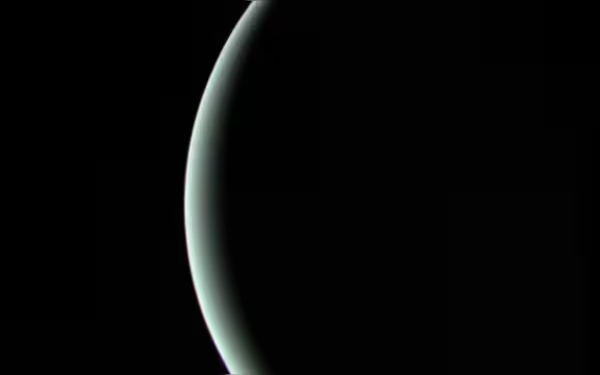Saturday, November 16, 2024 05:36 PM
NASA Solves Uranus Radiation Mystery After Decades
- Voyager 2 detected unexpected radiation around Uranus.
- Solar wind plays a crucial role in radiation environment.
- New findings suggest Uranus' moons may hold secrets.
 Image Credits: mashable_me
Image Credits: mashable_meNASA has solved a decades-old mystery regarding unexpected radiation detected by Voyager 2 around Uranus, revealing new insights into its moons.
NASA's Voyager mission has long been a beacon of exploration, providing us with remarkable insights into our solar system. Launched in the late 1970s, the Voyager spacecraft have traveled farther than any human-made objects, sending back invaluable data about the planets they encountered. One of the most intriguing stops on their journey was Uranus, the ice giant that rotates on its side. In 1986, Voyager 2 made a historic flyby of Uranus, revealing a world unlike any other. However, it also presented scientists with a puzzling mystery that would take decades to unravel.
During its close encounter with Uranus, Voyager 2 detected strong radiation surrounding the planet. This radiation was unexpected because there was no apparent source of energized particles to explain it. For years, scientists scratched their heads over this enigma, trying to understand why Uranus appeared so irradiated without a clear origin. But recent analysis of Voyager's data has shed light on this long-standing mystery.
According to new research published in Nature Astronomy, the extreme solar wind—streams of charged particles emitted by the sun—played a crucial role in creating the unusual radiation environment around Uranus. Jamie Jasinski, a NASA physicist who led the study, explained, "The spacecraft saw Uranus in conditions that only occur about 4 percent of the time." This means that the observations made by Voyager 2 were quite rare and provided a unique glimpse into the planet's magnetosphere.
Like Earth, Uranus possesses a protective magnetosphere, which is a region around the planet that is influenced by its magnetic field. This magnetosphere acts as a shield against solar storms and winds. However, when the solar wind hit Uranus, it compressed the planet's magnetosphere, pushing out the plasma that typically surrounds it. Instead of the usual plasma, the solar wind injected its own particles into the radiation belts around Uranus, explaining the high levels of radiation detected by Voyager.
This discovery not only clarifies the mystery of Uranus' radiation but also raises new questions about its five moons. Previously, the lack of plasma around Uranus suggested that its moons were not geologically active. Unlike other moons in our solar system, such as Europa, which is known for its ocean beneath the icy surface, Uranus' moons seemed dormant. However, the new findings imply that they might still hold some secrets waiting to be uncovered.
While there are currently no missions planned to revisit Uranus, the planet remains a priority target for future NASA explorations. At a staggering distance of 1.8 billion miles (2.9 billion kilometers) from Earth, Uranus presents significant challenges for space missions. Nevertheless, the Voyager probes continue their journey through interstellar space, carrying with them the legacy of human curiosity and the quest for knowledge.
The revelations from Voyager's data not only solve a decades-old mystery but also open the door to further exploration of Uranus and its moons. As we continue to learn more about our solar system, each discovery adds another piece to the puzzle of our cosmic neighborhood. The journey of discovery is far from over, and who knows what other secrets await us in the depths of space?













